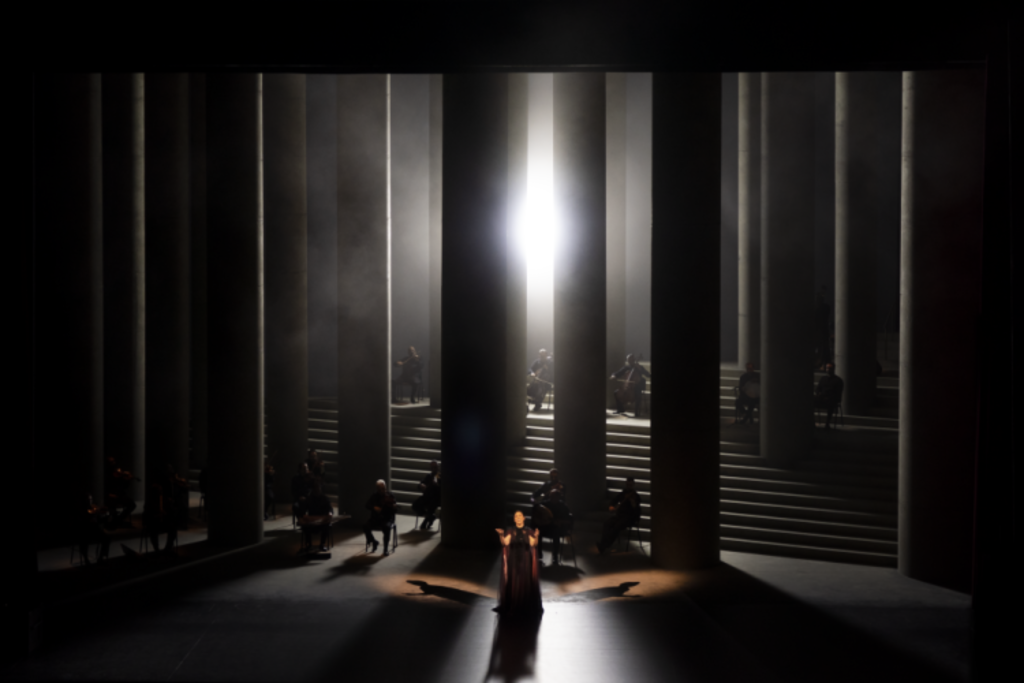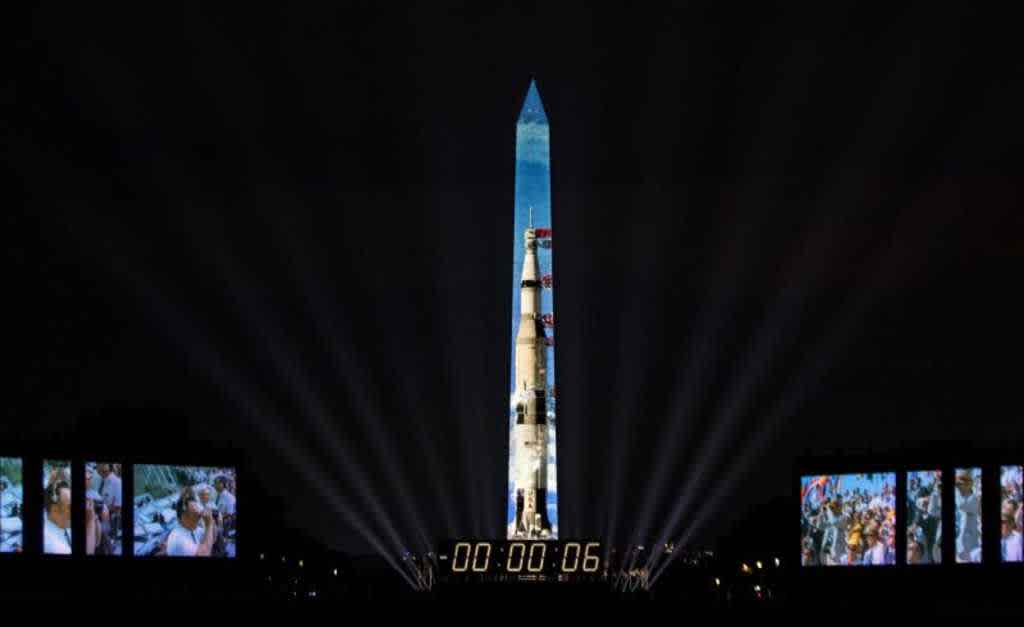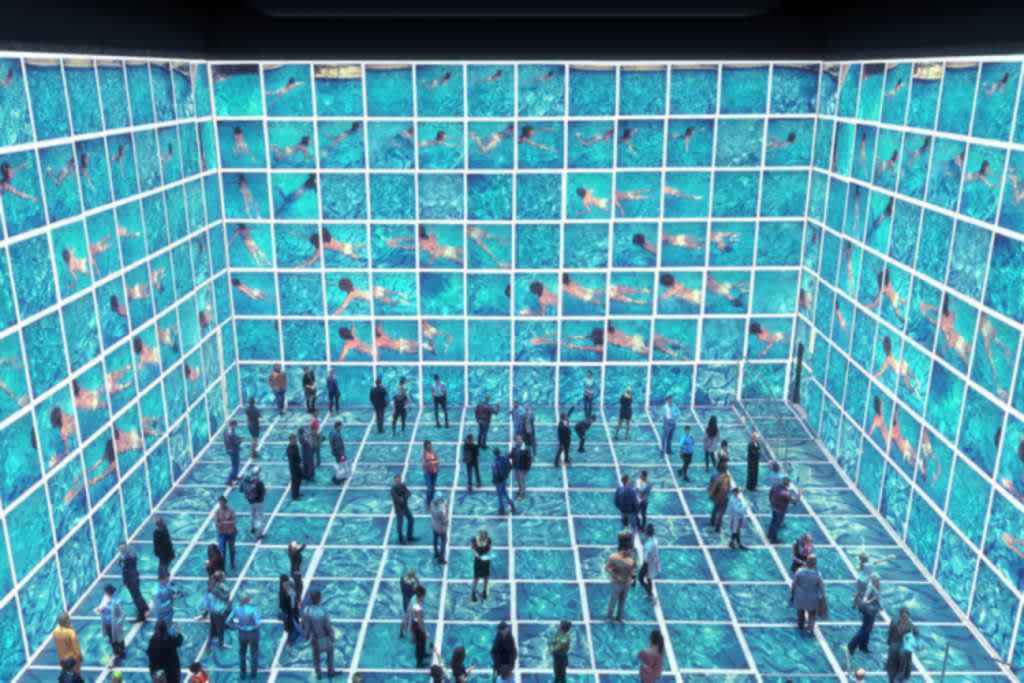When it comes to creating showstopping spectacles, there is no single, secret formula. Leo Warner explains how 59 Productions creates unique architectural magic.
Enter 59 Productions, an award-winning design studio with offices in the UK and the US and the brains behind impressive projection mapping and immersive projects across the globe.
The company found its start in the world of theatre, as Leo Warner, CEO, 59 Productions, explains: “59 Productions got involved with the National Theatre of Scotland when it was first set up in Edinburgh and Glasgow, including Black Watch which went on to do an international tour.
Back then, our design work was not specifically to do with live performance, it was quite graphic based, but we intersected quite frequently. As a result, our interest in time-based media rose to the surface. This allowed us to explore some radical approaches to incorporating video into live performance, and that became a focus for us.

“Our general industrial wanderlust had us seek out ways of deploying design in unusual combinations, using our aesthetic and technical design interests, and intersecting where projection meets physical scenery, where light and sound performance combine, that’s where our unique selling point as a multi-disciplinary studio evolved over the first five to ten years.
59 Productions has worked on some stand out examples that have made headlines around the globe. One standout is the projection mapping extravaganza of the United Nations headquarters in New York, which saw projections on all three sides of the building in addition to an audio, video and lighting experience.
No strangers to working outside the box, 59 Productions was also responsible for the projection of a to scale, 110 metre Saturn V rocket for the Apollo 50: Go for the Moon project, a projection mapping experience that required an amendment to the US constitution to project on to the Washington Monument for the very first time. But how does a design studio like 59 Productions create such exciting experiences?

For 59 Productions, technology plays a key role in the design process, but it is not the centre piece of the puzzle when it comes to delivering an exhilarating experience. The key for Warner is delivering a meaningful story that hits all the right notes with technology serving as the pen to write the narrative.
Warner explains: “Technology has always been a means to an end, rather than an end in itself. We are a very diverse, interdisciplinary team with multiple skills and interests.
All technology tends to be applied on whatever the idea is, and the idea is based on story. We will be agnostic when we’re given a brief, and we’ll quite often go in either trying to be agnostic or to make our clients agnostic about what the outcome can be. We will ask them what they want to achieve and work out whether a certain technology is the right solution.
“Our design process is generally concept led: The concept will be based on the brief of the story and the question of what we want to say and how the audience should experience it. But quite quickly we might start to get into the question of how we deliver the experience to audiences and where we may explore various technical options. Transitioning from black on stage seamlessly is a really good example of that.
"We may think about a high-quality LED product with the right drivers where we can create a seamless fade up from black and make a three-dimensional world appear out of nothing from the back of the stage, whereas historically we would have had to use Pepper’s Ghost or a hologauze effect. The awareness of what new technologies may be available to us, including materials, will affect that.”
59 Productions prides itself on avoiding a house style, never falling into one category or box to define its work. The company uses this freedom to avoid re-treading old ground, creating unique pieces of visual art that are distinct and imaginative.
"We weren’t just plasterin g art, we were bringing the [Guggenheim Museum] to life to be a character in its own story. That story couldn’t exist anywhere else." - Leo Warner, 59 Productions
g art, we were bringing the [Guggenheim Museum] to life to be a character in its own story. That story couldn’t exist anywhere else." - Leo Warner, 59 Productions
Warner says: “The reason for that is because the visual storytelling language, through projection mapping or LED, will be driven by story. With projection mapping work, in 95% of cases, it’s site specific. When addressing the question of whether ‘can you project on this building?’ or ‘can you help celebrate this event? We’ll always try and be specific about what we are doing. What is the emotional journey we are taking audiences on and what is the impetus?”
One leading example of this is at the Guggenheim Museum in Bilbao, Spain, a building that transformed the fate of a city in industrial decline. 59 Productions was brought on board to bring the unique structure to life through technology and a compelling story, exploring the history of the building and the city through visual storytelling.
Warner explains: “We suggested projecting on the building, which nobody thought was possible due to the building’s shiny titanium surface. The brief was to celebrate the museum’s 20th anniversary and make the experience a gift for the citizens of the city, which, for whom, the museum was built. It was important for us that it was about Bilbao, that we were celebrating the building itself and what it represented. We weren’t just plastering art on it, we were bringing the building to life to be a character in its own story. That story couldn’t exist anywhere else.
“It’s a similar story structure to the one we applied to our first architectural projection piece on the Sydney Opera House for its 40th anniversary. We made it the story of the building in its own words through pictures and sounds. Because these experiences are site specific, these two experiences were never going to be the same.
“There are certain structures and themes which we know work well and we hone in on those, but there are opportunities to take different approaches to allow people to engage and interact with these experiences in a different way. It’s rare that we do the same thing twice.”
59 Productions is also involved with Lightroom, an artist-led space, home to an exhibition that brings the work of British artist David Hockney to life alongside Holoplot to use the space volumetrically in terms of visuals and sound.

This space serves as Lightroom’s first immersive venue to explore new ideas and future concepts. “Having experienced several immersive venues, and our interest in whether this is a medium we could use, we decided that it would be an exciting platform”, says Warner, “A dimensional, volumetric space to tell a time-based narrative. We’re filling a gap by working with a living artist and looking at the world through his eyes. It’s a big experiment for us, because we’ve made immersive shows before but never opened a venue of our own.
“We will continue to work in some of the industries and disciplines we’ve done before. You will see more theatrical work, more projection as well as AR/VR projects and of course, the work we are doing with Lightroom. We are looking for opportunities where physical and architectural meet the ephemeral and time-based. Public realm work on a more semi-permanent or permanent basis would interest us, not just one or two spectacular nights, but becoming a part of a culture or community.”